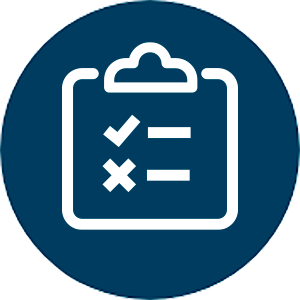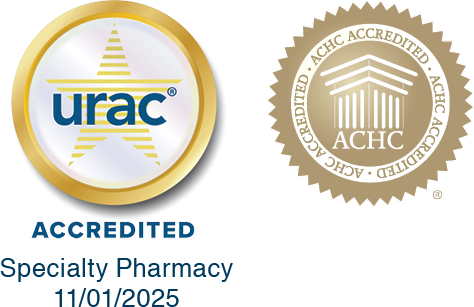Where higher quality leads to improving lives
Discover pharmacies that go above and beyond
With state-of-the-art 503A specialty compounding pharmacies in Dallas, Texas (our headquarters), and Ridgeland, Mississippi, AIS Healthcare has a fully redundant targeted drug delivery (TDD) operation designed to produce medication of the highest quality.
At both facilities, we have made significant investments in people and processes to be able to produce prescriptions that exceed standards and expectations. We use a proven, proprietary process that combines aseptic processing with terminal sterilization on patient-specific prescriptions to achieve higher sterility assurance and extended Beyond-Use Dates (BUD). This gives providers confidence in the medications they prescribe and helps to reduce medication waste.
100%
third-party testing of all stock solutions1
1Third-party testing for pH, sterility, potency, endotoxins and particulate matter
21–45
day BUD at room temperature—average 34 days—for all medications2
2All patient-specific dispenses within maximum concentrations (based on AIS Healthcare in-house data for 130,000 aseptically processed and terminally sterilized patient-specific prescriptions in 2020). Note: The BUD and storage of our combination therapy prescriptions will depend upon individual state regulations.
1:1,000,000
sterility assurance levels for higher quality and patient safety (versus 1:1,000 sterility assurance levels with aseptic processing and filtration)
Advancing quality standards
Our quality and sterility processes go above and beyond industry guidelines.
| AIS Healthcare quality standard | USP <797> guidelines |
|---|---|
| AIS only uses sterile cleaning agents throughout the entire cleanroom suite, not just inside of the primary engineering control (PEC) | Exceeds the new USP <797> standard as cleaning agents only required to be sterile within the PEC |
| All stock solutions and patient-specific compounding are done only by a licensed pharmacist | Compounder not required to be licensed pharmacist |
| Enhanced contamination control procedures, including performing garb sampling at the same time as gloved fingertip sampling | Exceeds the new USP <797> standards by assessing our staff’s ability to don sterile garb properly |
| AIS requires our pharmacy technician staff to perform gloved fingertip sampling every 3 months, and we require pharmacists to undergo this same sampling monthly | This exceeds the new guidelines |
| Multiple 0.22-micron sterilizing-grade filtration steps, including filter integrity testing, to ensure medication sterility | Only one 0.22-micron sterilizing-grade filtration step required |
| Four independent cleanroom certifications per year | Only two required per year |
| Non-viable particle count done 12 times per year, combined viable air and surface sampling done no fewer than 50 times per year | Non-viable particle count and viable air sampling required twice per year; surface sampling required periodically |
Recognized and accredited
AIS Healthcare facilities are inspected by state boards of pharmacy as well as the U.S. Drug Enforcement Administration and the U.S. Food and Drug Administration (with zero Form 483 observations on the last inspection in our Ridgeland, MS facility).
We have also been recognized by the top independent pharmacy accreditors, URAC and the Accreditation Commission for Health Care (ACHC). These accreditors have assessed our compliance with industry standards, and inspectors have confirmed our ability to consistently produce high-quality prescriptions for our patients. These accreditations validate our commitment to higher quality standards and set our pharmacies apart.
Exceeding standards—and expectations—at every turn
AIS Healthcare’s state-of-the-art 503A compounding pharmacies have been designed and upgraded to support our industry-leading quality standards, and are filled with custom equipment and staffed by highly trained pharmacists and technicians.
Our quality and sterility processes have been designed in close collaboration with industry experts, and are regularly reexamined to find any areas of potential improvement. We’ve made all these investments to deliver medications of the highest possible quality to all the patients and providers we serve.
Our pharmacies at a glance
Twice the capabilities
Licensed in all 50 states, we have two state-of-the-art facilities—in Dallas, Texas, (our headquarters) and in Ridgeland, Mississippi. Our fully redundant compounding operation ensures drug supply continuity to address potential shortages, providing assurance to patients, providers and payers.
Spaces that exceed standards
Each of our pharmacies have multiple controlled rooms that exceed the required ISO standards for air quality. All ISO-classified environments in both of our facilities are certified by a third party every three months, twice as frequently as industry requirements, giving patients and providers even more confidence in the quality and sterility of our medications.
Built for cleanliness
The internal pharmacy environments were constructed without wood or other non-cleanable surfaces. This allows every cleaning and disinfecting we complete to be on non-porous, easily cleanable surfaces, not just in the controlled cleanroom environments but in the surrounding areas as well. Even though it is not used for compounding, all water coming into the facilities goes through deionization, reverse osmosis, multiple carbon and sediment filters and UV light to achieve the highest possible purity and limit the introduction of bioburden anywhere in the pharmacy. Backup water treatment ensures a constant flow of purified water for the operation of our facilities. We also have medical-grade air systems that run air through seven different filters before it is used for terminal sterilization and filter integrity testing.
Checked, and checked again
AIS Healthcare uses double-blind order entry and verification, in which all orders are reviewed by two pharmacy technicians and then by two pharmacists, before medication is compounded. Another pharmacist and technician then verify compounding as well as a final pharmacist verification. This means multiple licensed professionals have eyes on every order to reduce the chances of any human error.
Well-connected
In addition to faxed written prescriptions sent to the AIS Healthcare office, physicians can place orders through their EHR systems or use the e-prescribing portal on our DEA-compliant, proprietary EHR, MyAIS Connect, to print and sign prescriptions or submit them electronically. Our prescription portal is certified by Surescripts, meaning it complies with all industry standards on sending and receiving electronic prescriptions. In addition, our central data storage system keeps data safe and allows it to be retrieved at either pharmacy whenever it’s needed.
Ready for the unexpected
Both pharmacies have automated facility management systems that go above industry standards to help us maintain optimal internal temperature, air pressure and humidity. In the event of a power outage, both buildings have generators and redundant units to maintain temperature, water and steam generation, helping us ensure patients get the medications they need even during an emergency.
Sharing our knowledge
A Center of Excellence in intrathecal medication compounding, our pharmacies work to promote clinical excellence here and throughout the country. We conduct on-site training for nurses and offer preceptorships, internships and fellowships for providers or students, and we invite physicians to both locations for ongoing education programs.



